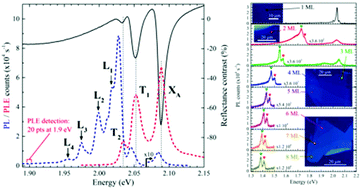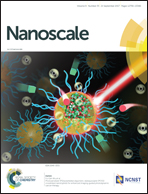The optical response of monolayer, few-layer and bulk tungsten disulfide†
Abstract
We present a comprehensive optical study of thin flakes of tungsten disulfide (WS2) with thickness ranging from mono- to octalayer and in the bulk limit. It is shown that the optical band-gap absorption of monolayer WS2 is governed by competing resonances arising from one neutral and two distinct negatively charged excitons whose contributions to the overall absorption of light vary as a function of temperature and carrier concentration. The photoluminescence response of monolayer WS2 is found to be largely dominated by disorder/impurity- and/or phonon-assisted recombination processes. The indirect band-gap luminescence in multilayer WS2 turns out to be a phonon-mediated process whose energy evolution with the number of layers surprisingly follows a simple model of a two-dimensional confinement. The energy position of the direct band-gap response (A and B resonances) is only weakly dependent on the layer thickness, which underlines an approximate compensation of the effect of the reduction of the exciton binding energy by the shrinkage of the apparent band gap. The A-exciton absorption-type spectra in multilayer WS2 display a non-trivial fine structure which results from the specific hybridization of the electronic states in the vicinity of the K-point of the Brillouin zone. The effects of temperature on the absorption-like and photoluminescence spectra of various WS2 layers are also quantified.

- This article is part of the themed collection: Editor’s Choice: Optical Spectroscopy of 2D materials


 Please wait while we load your content...
Please wait while we load your content...